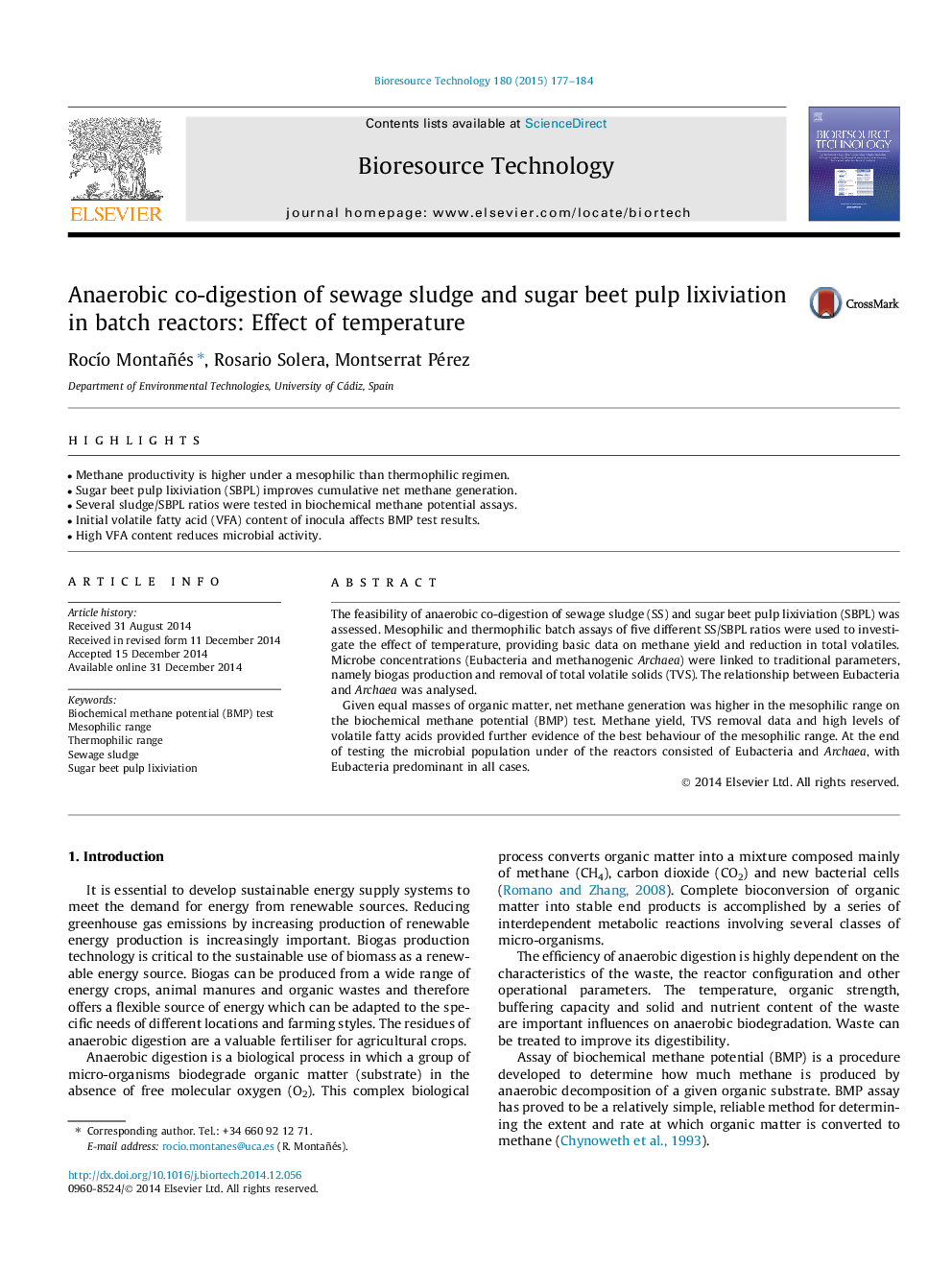| Article ID | Journal | Published Year | Pages | File Type |
|---|---|---|---|---|
| 680011 | Bioresource Technology | 2015 | 8 Pages |
•Methane productivity is higher under a mesophilic than thermophilic regimen.•Sugar beet pulp lixiviation (SBPL) improves cumulative net methane generation.•Several sludge/SBPL ratios were tested in biochemical methane potential assays.•Initial volatile fatty acid (VFA) content of inocula affects BMP test results.•High VFA content reduces microbial activity.
The feasibility of anaerobic co-digestion of sewage sludge (SS) and sugar beet pulp lixiviation (SBPL) was assessed. Mesophilic and thermophilic batch assays of five different SS/SBPL ratios were used to investigate the effect of temperature, providing basic data on methane yield and reduction in total volatiles. Microbe concentrations (Eubacteria and methanogenic Archaea) were linked to traditional parameters, namely biogas production and removal of total volatile solids (TVS). The relationship between Eubacteria and Archaea was analysed.Given equal masses of organic matter, net methane generation was higher in the mesophilic range on the biochemical methane potential (BMP) test. Methane yield, TVS removal data and high levels of volatile fatty acids provided further evidence of the best behaviour of the mesophilic range. At the end of testing the microbial population under of the reactors consisted of Eubacteria and Archaea, with Eubacteria predominant in all cases.
